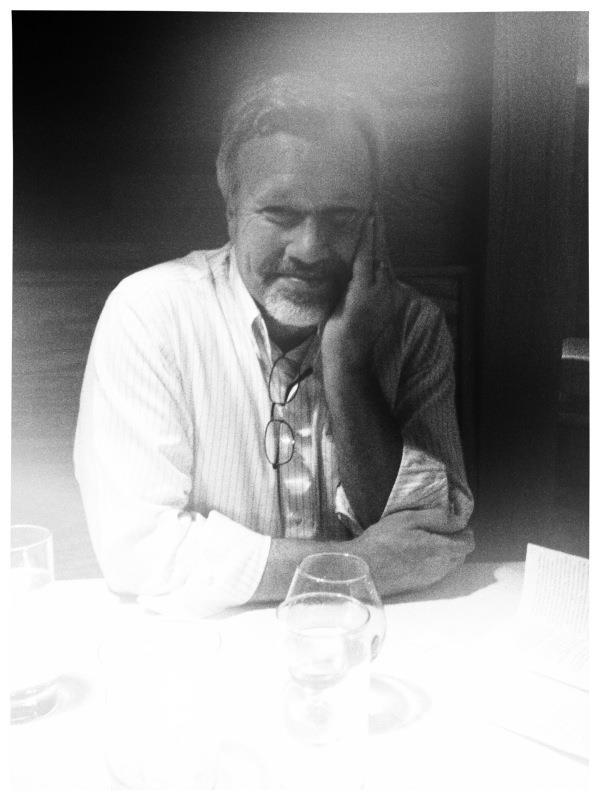
Luthiery, Early Music, and Traditional Woodworking have shaped my life like few other passions.
I worked as a Calligrapher in high school. While doing job-related research in the library, the three passions above entered my life through a single engraving that read: “A Fool Carries a Lute on a Cart.” Curiosity took over from that point: the engraving led me to the lute and early music; the lute led me to luthiery; and luthiery led me to traditional woodworking. Sometimes, life-paths can be revealed in an instant, even when those paths are less than direct.
My entry into luthiery began with a deafeningly dull thud. My father, an Aircraft Tool Maker by trade, vehemently objected to luthiery as a career path, and threatened to disown me at 16 over the matter. Learning about my maternal grandfather (Edward C. Twist) and his luthiery career at about the same time did not help either, as my grandfather had long-since been dead, was previously estranged from my family, and his shop, tools, instruments and knowledge were scattered. With few luthiery apprenticeships available in the Dallas, Texas area, and despite my orchestra director’s attempts to help me find placement, none of the local luthiers saw worthwhile potential in me. It became obvious that my path to a traditional craft would be untraditional. Self-sufficiency (first), college (second), and luthiery (third), seemed my best path forward.
After graduating from high school in 1980, I paid for college by working odd jobs as an Aircraft Tool Maker, Calligrapher, Bank Teller, Bookkeeper, Research Assistant, Library Cataloging Assistant, Retail Music Salesperson, and performed on Lute, Cittern, Voice, Natural Trumpet, and Cornetto…where ever gigs could be found. In between work and school, I read every book and article I could find on instrument making, built instruments from kits, repaired instruments, and then graduated to building my own instruments.
I hold a B.A. in Music History and Literature from Loyola University New Orleans, and an M.S. in Library Science from The University of North Texas. After graduating from UNT, I served as the Music, Theatre and Dance Librarian at Southern Methodist University until 1996. While in that position, I also served as the SMU Collegium Musicum instructor; maintained the Collegium Musicum instrument collection; co-curated music exhibits at the Nancy Hamon Gallery; and provided collection-specific Early Music docent training for the SMU Meadows Museum.
At SMU, I completed my coursework towards an M.M. in Musicology, specializing in Organology, with a focus on Late 16th Century English lute-cittern-hybrid instruments. When my thesis advisor retired in 1996 and the remaining advisors had no interest in my thesis subject, I changed careers to Information Technology. The career change was drastic, but couldn’t lessen the pull Luthiery, Early Music, and Traditional Woodworking had on me.
As my IT career began and my academic career wound down, I couldn’t stop researching and building instruments. Unfinished but not forgotten, work on that thesis germinated the most important seed in my approach building instruments…namely, that the environment that surrounds an object shapes its cultural lifespan as much as the work for which it’s intended. The effects of politics, economics, ecology, labor, technology, metallurgy, aesthetics, and process…especially process…making instruments in the context of era-specific technological boundaries…each of those concepts beckoned to me when I set foot in my shop.
While I’d built instruments since 1983, an opportunity presented itself in 1998 to try luthiery as a singular occupation. Despite that opportunity, it became evident within two years that I needed to choose between commercial success as a luthier, and building instruments via specific processes and aesthetics. I chose the latter of the two, and haven’t looked back since.
Becoming a father in 2000, I resumed my IT career, both to support my family, and to support converting my workshop to use only traditional woodworking methods. After five years of research and planning, I began replacing my power tools with human-powered tools. Working at night and on the weekends, the conversion took 13 years. I know some tweaking of my processes will continue to occur, but I’m now finally at a place to re-learn efficiency in my shop and resume building instruments.
When not in the luthiery shop, I enjoy time with family, hearth cooking, cycling, and work as an Information Security Professional.
![]()
You must be logged in to post a comment. Login